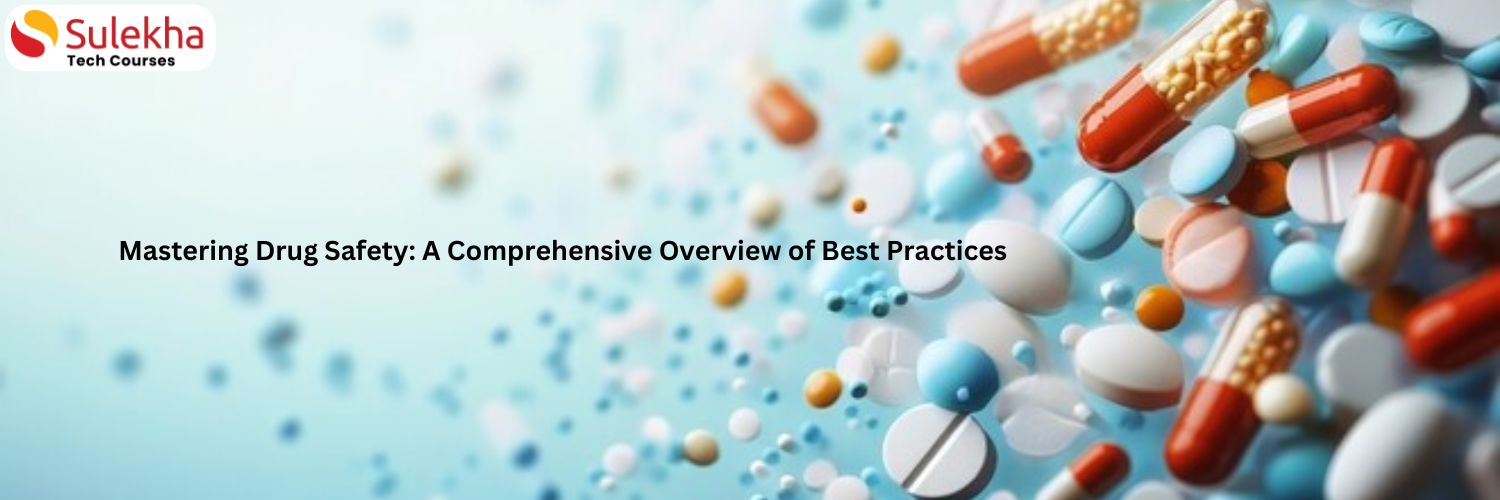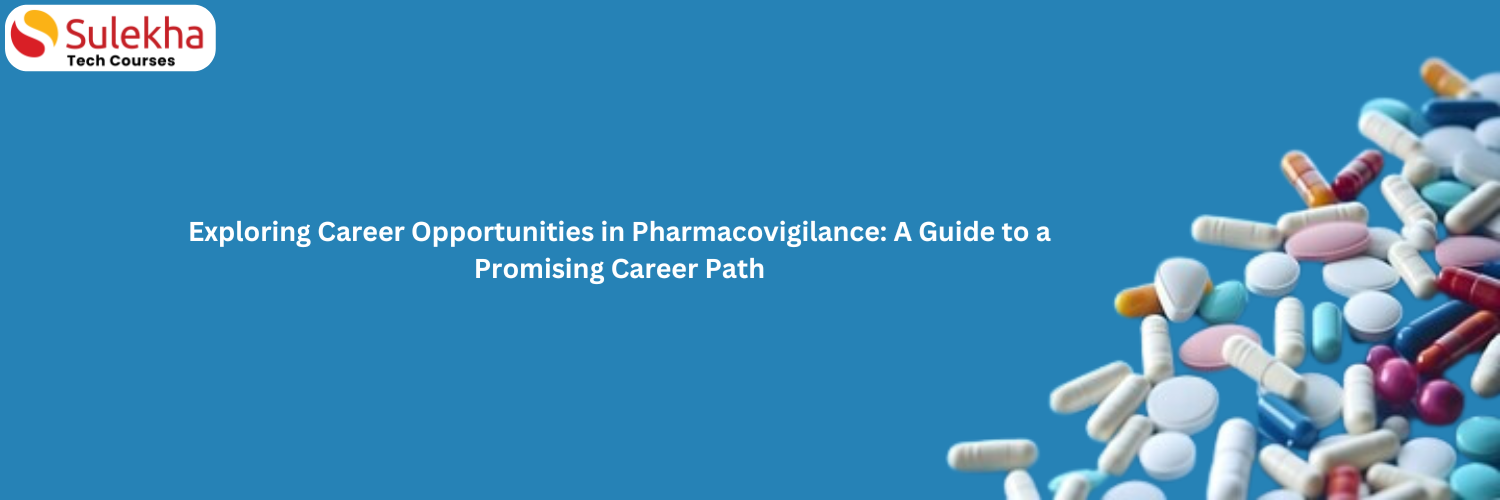Understanding Drug Safety Practices: A Comprehensive Guide

Drug safety is not just a routine, it's a lifeline in the healthcare and pharmaceutical industries. It ensures that medications are not just used but used effectively and safely. This involves monitoring, assessing, and managing the risks associated with pharmaceutical products throughout their lifecycle.
This comprehensive guide will explore the essential components of drug safety, highlighting the measures taken to prevent adverse drug reactions, ensure patient safety, and promote responsible medication use.
What is Drug Safety?
Drug safety, or pharmacovigilance, refers to the science and activities of detecting, assessing, understanding, and preventing adverse effects or other drug-related problems. The ultimate goal of drug safety practices is to minimize harm and optimize patient therapeutic outcomes. Pharmacovigilance covers the entire lifespan of a drug, from pre-marketing clinical trials to post-marketing surveillance.
Key Principles of Drug Safety
Drug safety practices are based on several fundamental principles:
Adverse Drug Reactions (ADRs): ADRs are harmful or unintended responses to drugs, ranging from mild side effects to life-threatening conditions. Monitoring and documenting ADRs are essential to understanding the full spectrum of a drug's safety profile.
Risk Management: This involves identifying potential risks associated with a drug and implementing strategies to minimize those risks. Risk management plans (RMPs) are used to ensure that drugs' benefits outweigh their potential dangers.
Post-Marketing Surveillance: After a drug is approved and released to the market, its safety continues to be monitored. Post-marketing surveillance helps identify ADRs that may have yet to be detected during clinical trials due to limited sample sizes or specific patient populations.
Data Collection and Reporting: Healthcare professionals, patients, and drug manufacturers must report any adverse events or side effects associated with a drug. This data is collected by regulatory agencies such as the U.S. Food and Drug Administration (FDA) and the European Medicines Agency (EMA), which analyze trends and patterns in ADRs.
Pre-Marketing Drug Safety Practices
Before a drug reaches the market, rigorous testing ensures its safety and efficacy. Pre-marketing safety practices involve:
Clinical Trials: Clinical trials assess the safety and efficacy of a drug in human participants. These trials are typically divided into three phases:
Phase I: Focuses on safety, dosage, and side effects in a small group of healthy volunteers.
Phase II: Assesses the drug's effectiveness and further evaluates its safety in a larger group of patients with the condition the drug is meant to treat.
Phase III: Expands the testing to an even larger patient population to confirm the drug's efficacy, safety, and optimal use.
Risk Assessment: Before clinical trials, scientists perform extensive preclinical studies (animal studies) to identify potential risks. Risk assessments consider factors such as the drug's chemical structure, mechanism of action, and any observed toxic effects in animal models.
Post-Marketing Drug Safety
Once a drug is approved for market release, its safety continues to be closely monitored. Post-marketing surveillance includes the following:
Adverse Event Reporting Systems: Healthcare professionals and consumers can report adverse events to regulatory bodies like the FDA's MedWatch program. These reports help regulators track drug safety once the product is available to the general public.
Pharmacovigilance Databases: Large databases collect information about ADRs, enabling researchers to detect trends and identify potential safety signals. Regulatory agencies use this data to update drug labels, issue warnings, or even withdraw drugs from the market if necessary.
Risk Communication: Regulatory authorities provide public health alerts, drug recalls, and safety advisories when new risks are identified. Clear communication ensures that healthcare providers and patients know of new safety concerns.
Risk Minimization Strategies: When new risks are identified, drug manufacturers may implement risk minimization strategies, including changes to drug labeling, restricted distribution programs, or additional patient education.
Role of Healthcare Professionals in Drug Safety
Healthcare providers, including doctors, pharmacists, and nurses, are not just part of the system; they are the system that ensures drug safety. They are responsible for prescribing medications safely, educating patients, and reporting adverse events.
Prescribing Medications Safely: Healthcare providers must carefully consider a patient's medical history, existing conditions, and potential drug interactions.
Educating Patients: Patients should be informed about the correct usage of medications, potential side effects, and the importance of adhering to prescribed treatment regimens.
Reporting Adverse Events: Healthcare professionals must report any adverse reactions or side effects to regulatory bodies to help track the safety of medications.
Challenges in Drug Safety
Despite our best efforts, challenges in drug safety persist. These challenges, such as undetected long-term effects, variability in patient populations, and global variations in reporting and regulation, remind us of the complexity of the task.
Undetected Long-Term Effects: Some side effects may only emerge after long-term use of a drug or in specific subpopulations, making it difficult to predict all potential risks before market release.
Variability in Patient Populations: Different patients respond to medications uniquely due to age, genetics, gender, and existing medical conditions. This variability can complicate drug safety assessments.
Global Variations in Reporting and Regulation: Drug safety practices can vary by country, with differences in how adverse events are reported and drugs are regulated. This can sometimes delay the identification of global safety concerns.
The Future of Drug Safety
Advancements in technology, including artificial intelligence (AI) and big data analytics, are transforming drug safety practices. These innovations offer the potential to:
Improve Early Detection of Safety Signals: AI can help analyze vast amounts of data from clinical trials, medical records, and social media to identify potential adverse effects more quickly.
Personalized Medicine: Advances in genomics and pharmacogenomics may enable customized treatment approaches, allowing healthcare providers to select more likely safe and effective medications based on a patient's genetic makeup.
Global Collaboration: Enhanced international cooperation and data sharing among regulatory agencies and healthcare providers will help improve global drug safety monitoring.
Conclusion
Drug safety is a multifaceted, ongoing process that involves monitoring, assessing, and managing the risks of medications to ensure that their benefits outweigh potential harm. Drug safety practices are designed to protect patients and enhance therapeutic outcomes from pre-marketing trials to post-marketing surveillance. As new technologies and data analytics continue to evolve, the future of drug safety holds promise for even more proactive and efficient safety monitoring.
By maintaining rigorous safety standards, improving communication, and fostering collaboration across the healthcare system, drug safety practices can continue to evolve and help minimize the risks associated with medications, ultimately benefiting public health.
Find a course provider to learn Drug Safety and Pharmacovigilance
Java training | J2EE training | J2EE Jboss training | Apache JMeter trainingTake the next step towards your professional goals in Drug Safety and Pharmacovigilance
Don't hesitate to talk with our course advisor right now
Receive a call
Contact NowMake a call
+1-732-338-7323Enroll for the next batch
pharmacovigilance course
- Dec 9 2025
- Online
pharmacovigilance course
- Dec 10 2025
- Online
pharmacovigilance course
- Dec 11 2025
- Online
pharmacovigilance course
- Dec 12 2025
- Online
Related blogs on Drug Safety and Pharmacovigilance to learn more

Career opportunities in pharmacovigilance
Every day, millions of people rely on drugs to treat, manage, or prevent various health conditions. But how do we ensure these medications are safe and effective for all patients? That’s where pharmacovigilance comes in, a field dedicated to monitori

What is the significance of Pharmacovigilance in today’s healthcare industry?
The process involved in pharmacovigilance involves the wide understanding of requirements can be daunting even for seasoned industry pros.

Understanding About Drug Safety And Pharmacovigilance
Pharmacovigilance or Drug Safety is related to collection, detection, monitoring, assessment and prevention of adverse effects associated with pharmaceutical products. It is an important component which comes under effective drug regulation system. H
Latest blogs on technology to explore

From Student to AI Pro: What Does Prompt Engineering Entail and How Do You Start?
Explore the growing field of prompt engineering, a vital skill for AI enthusiasts. Learn how to craft optimized prompts for tools like ChatGPT and Gemini, and discover the career opportunities and skills needed to succeed in this fast-evolving indust

How Security Classification Guides Strengthen Data Protection in Modern Cybersecurity
A Security Classification Guide (SCG) defines data protection standards, ensuring sensitive information is handled securely across all levels. By outlining confidentiality, access controls, and declassification procedures, SCGs strengthen cybersecuri

Artificial Intelligence – A Growing Field of Study for Modern Learners
Artificial Intelligence is becoming a top study choice due to high job demand and future scope. This blog explains key subjects, career opportunities, and a simple AI study roadmap to help beginners start learning and build a strong career in the AI

Java in 2026: Why This ‘Old’ Language Is Still Your Golden Ticket to a Tech Career (And Where to Learn It!
Think Java is old news? Think again! 90% of Fortune 500 companies (yes, including Google, Amazon, and Netflix) run on Java (Oracle, 2025). From Android apps to banking systems, Java is the backbone of tech—and Sulekha IT Services is your fast track t

From Student to AI Pro: What Does Prompt Engineering Entail and How Do You Start?
Learn what prompt engineering is, why it matters, and how students and professionals can start mastering AI tools like ChatGPT, Gemini, and Copilot.

Cyber Security in 2025: The Golden Ticket to a Future-Proof Career
Cyber security jobs are growing 35% faster than any other tech field (U.S. Bureau of Labor Statistics, 2024)—and the average salary is $100,000+ per year! In a world where data breaches cost businesses $4.45 million on average (IBM, 2024), cyber secu

SAP SD in 2025: Your Ticket to a High-Flying IT Career
In the fast-paced world of IT and enterprise software, SAP SD (Sales and Distribution) is the secret sauce that keeps businesses running smoothly. Whether it’s managing customer orders, pricing, shipping, or billing, SAP SD is the backbone of sales o

SAP FICO in 2025: Salary, Jobs & How to Get Certified
AP FICO professionals earn $90,000–$130,000/year in the USA and Canada—and demand is skyrocketing! If you’re eyeing a future-proof IT career, SAP FICO (Financial Accounting & Controlling) is your golden ticket. But where do you start? Sulekha IT Serv

Train Like an AI Engineer: The Smartest Career Move You’ll Make This Year!
Why AI Engineering Is the Hottest Skillset Right Now From self-driving cars to chatbots that sound eerily human, Artificial Intelligence is no longer science fiction — it’s the backbone of modern tech. And guess what? Companies across the USA and Can

Confidence Intervals & Hypothesis Tests: The Data Science Path to Generalization
Learn how confidence intervals and hypothesis tests turn sample data into reliable population insights in data science. Understand CLT, p-values, and significance to generalize results, quantify uncertainty, and make evidence-based decisions.